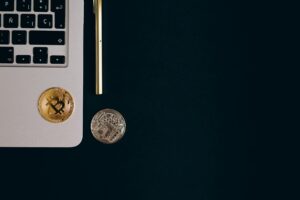
Imagine you never had to work again to pay for things like food, rent, or the activities you love. That’s what financial independence (FI) is all about—it means you have enough money saved and invested that you can cover all your living expenses for the rest of your life. But how do you know how much money you actually need? That might sound like a tough question, but we can break it down into simple steps.
Step 1: Understand Your Yearly Expenses
To figure out how much money you need to become financially independent, you first need to know how much you spend each year. Think about everything you spend money on—rent, groceries, transportation, entertainment, vacations, and more.
Let’s say you calculate that you spend AED 100,000 per year to cover all your needs. This is your yearly expenses, and it’s an important number to remember.
Step 2: The 4% Rule – Your Key to Financial Independence
Once you know your yearly expenses, we can use a simple concept called the 4% rule to figure out how much money you need to save. The 4% rule is a common guideline used by people who want to retire early or achieve financial independence. It works like this: if you save and invest enough money, you can safely withdraw 4% of your total savings each year to cover your expenses.
Why 4%? Financial experts believe that if you only take out 4% of your savings each year, your investments will continue to grow, and your money will last for at least 30 years, or even longer. This allows your savings to keep up with inflation (the rising cost of living) and prevent you from running out of money.
Let’s apply the 4% rule to our example:
- If your yearly expenses are AED 100,000, you need to save enough so that 4% of your savings equals AED 100,000.
- To calculate that, you divide your yearly expenses by 4%, or 0.04:
100,000 ÷ 0.04 = AED 2.5 million.
This means you would need AED 2.5 million in savings and investments to live off AED 100,000 per year without working.
Step 3: Different Expenses, Different Numbers
Let’s look at a few other examples to see how different people might need different amounts to be financially independent.
Example 1: Higher Expenses
Imagine someone who has a bigger family, lives in a more expensive area, or enjoys spending more on vacations and hobbies. Their yearly expenses might be AED 200,000. Using the same 4% rule, here’s how much they would need:
- 200,000 ÷ 0.04 = AED 5 million.
This person would need to save AED 5 million to cover AED 200,000 in yearly expenses.
Example 2: Lower Expenses
On the other hand, a person who lives a simpler life with fewer expenses, like AED 60,000 per year, would need less to reach financial independence. Here’s the math for them:
- 60,000 ÷ 0.04 = AED 1.5 million.
They would need AED 1.5 million in savings to cover their annual costs.
Step 4: Building Your Savings – The Path to Financial Independence
The idea of saving millions of dirhams might sound impossible, but the truth is, it’s completely achievable if you plan well and start early. The key to financial independence isn’t just saving money—it’s investing your savings so they grow over time.
Saving vs. Investing
Think of saving like putting your money in a piggy bank—it’s safe, but it doesn’t grow very fast. Investing is more like planting a tree. You plant a small seed (your initial money), and over time, with proper care (choosing good investments), that tree grows bigger and starts to produce fruit (more money).
When you invest in things like stocks or bonds, your money has the potential to grow at a much faster rate than it would in a regular savings account. Historically, investments in the stock market have earned an average of about 7% per year. This means that every year, your money can grow by 7%, and then the next year it grows even more because you’re earning money on both your original savings and the money your investments have already earned. This is called compounding.
Step 5: Compounding – The Power of Time
Let’s say you start saving AED 50,000 every year. If you invest that money and earn around 7% each year from your investments, here’s how much your savings could grow over time:
- After 10 years, you could have about AED 700,000.
- After 20 years, your savings could grow to AED 2 million.
- After 25 years, you might reach your AED 2.5 million goal.
This is why it’s so important to start saving and investing as early as possible. The more time your money has to grow, the easier it will be to reach financial independence.
Example: How Compounding Works
Imagine you have AED 1,000. You invest it and earn 7% in the first year, so now you have AED 1,070. In the second year, you don’t just earn 7% on the original AED 1,000—you earn 7% on AED 1,070. So at the end of the second year, you have AED 1,144.90. Every year, you’re earning money on a larger amount, which helps your savings grow faster and faster.
Step 6: Cutting Expenses to Save More
The more you can save and invest, the faster you’ll reach your financial independence goal. If you can cut your expenses, you can save more each year. This might mean spending less on things like eating out, buying fewer clothes, or skipping some vacations. It’s like choosing not to buy the most expensive video game every time a new one comes out, so you can save for something bigger, like a new console or a trip.
Example: Small Changes Add Up
Let’s say you cut AED 500 from your monthly spending. That might not seem like a lot, but over a year, that’s AED 6,000. If you invest that AED 6,000 and earn 7% on it every year, it can turn into AED 60,000 in 30 years, just from one small change!
Step 7: Reaching Your FI Number
Your FI number is the amount of money you need to become financially independent. Once you know your yearly expenses and use the 4% rule, you have your target. For most people, it takes many years of saving and investing to reach this goal, but with patience, consistency, and the power of compounding, you can get there.
Remember, the earlier you start saving and investing, the easier it will be to hit your FI number. Whether it’s AED 1.5 million, AED 2.5 million, or AED 5 million, achieving financial independence is like climbing a mountain—you take it one step at a time.
Conclusion: Financial Independence is Possible
Becoming financially independent means you can live life on your terms. Whether you want to work less, travel more, or spend time doing what you love, having enough money saved and invested gives you the freedom to choose. It might seem like a huge goal, but with careful planning, smart saving, and consistent investing, you can make it a reality.
Start small, cut unnecessary expenses, and let the magic of compounding work for you. Over time, your money will grow, and one day, you’ll wake up and realize that you’re financially independent!


